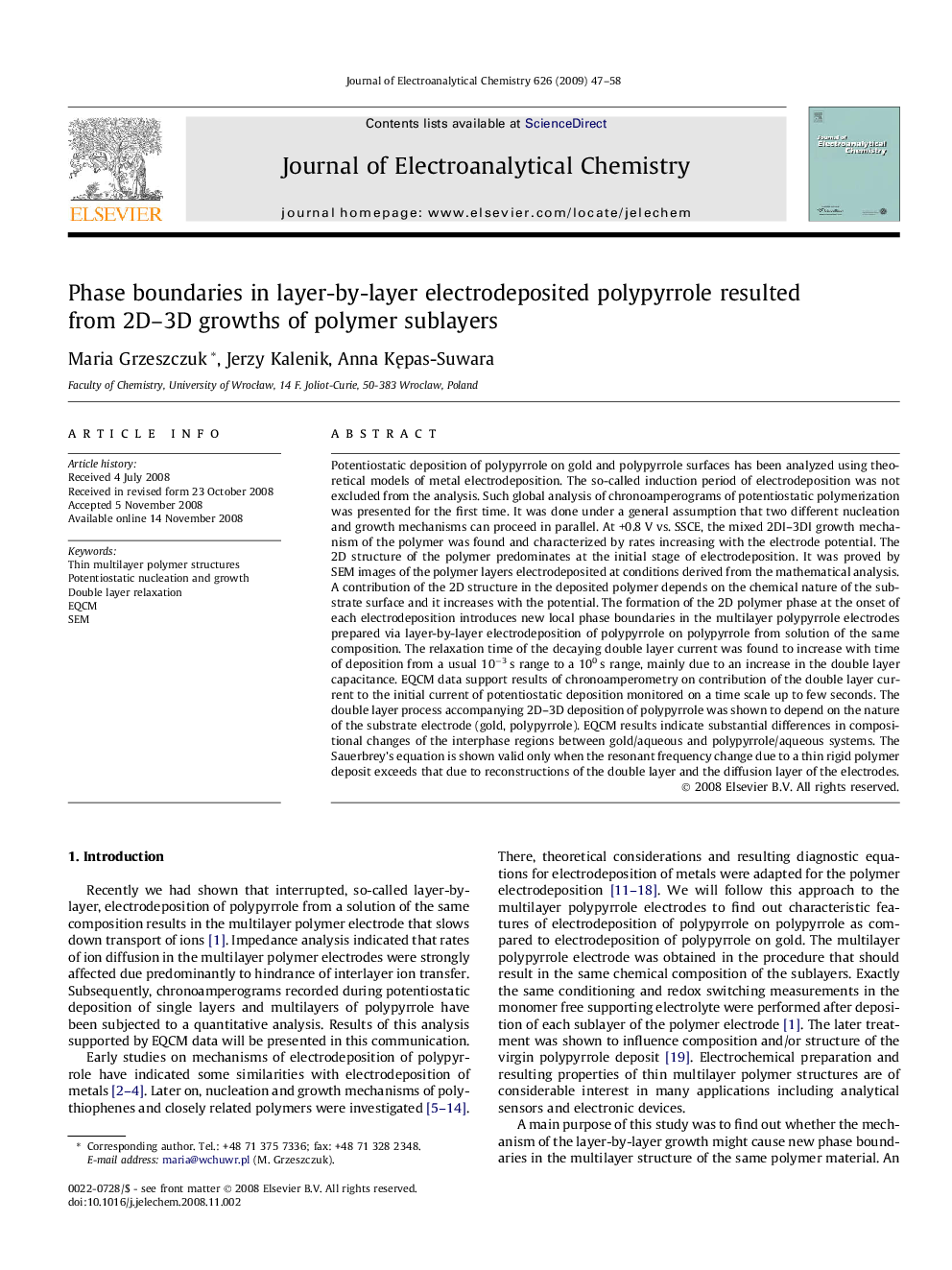| کد مقاله | کد نشریه | سال انتشار | مقاله انگلیسی | نسخه تمام متن |
|---|---|---|---|---|
| 220243 | 463323 | 2009 | 12 صفحه PDF | دانلود رایگان |

Potentiostatic deposition of polypyrrole on gold and polypyrrole surfaces has been analyzed using theoretical models of metal electrodeposition. The so-called induction period of electrodeposition was not excluded from the analysis. Such global analysis of chronoamperograms of potentiostatic polymerization was presented for the first time. It was done under a general assumption that two different nucleation and growth mechanisms can proceed in parallel. At +0.8 V vs. SSCE, the mixed 2DI–3DI growth mechanism of the polymer was found and characterized by rates increasing with the electrode potential. The 2D structure of the polymer predominates at the initial stage of electrodeposition. It was proved by SEM images of the polymer layers electrodeposited at conditions derived from the mathematical analysis. A contribution of the 2D structure in the deposited polymer depends on the chemical nature of the substrate surface and it increases with the potential. The formation of the 2D polymer phase at the onset of each electrodeposition introduces new local phase boundaries in the multilayer polypyrrole electrodes prepared via layer-by-layer electrodeposition of polypyrrole on polypyrrole from solution of the same composition. The relaxation time of the decaying double layer current was found to increase with time of deposition from a usual 10−3 s range to a 100 s range, mainly due to an increase in the double layer capacitance. EQCM data support results of chronoamperometry on contribution of the double layer current to the initial current of potentiostatic deposition monitored on a time scale up to few seconds. The double layer process accompanying 2D–3D deposition of polypyrrole was shown to depend on the nature of the substrate electrode (gold, polypyrrole). EQCM results indicate substantial differences in compositional changes of the interphase regions between gold/aqueous and polypyrrole/aqueous systems. The Sauerbrey’s equation is shown valid only when the resonant frequency change due to a thin rigid polymer deposit exceeds that due to reconstructions of the double layer and the diffusion layer of the electrodes.
Journal: Journal of Electroanalytical Chemistry - Volume 626, Issues 1–2, 15 February 2009, Pages 47–58